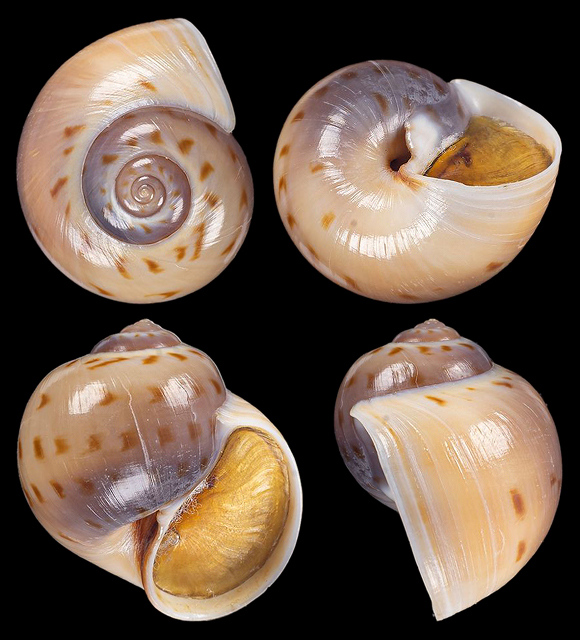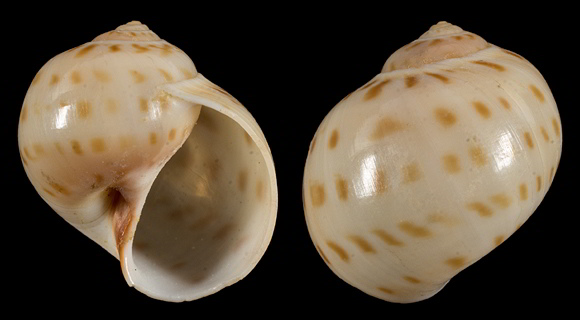(Marche-Marchad, 1957)

Predator in sedimentary bottoms of the lower infralittoral and the circalittoral, down to the continental shelf and slope.
Basionym: Polinices grossularia.
Above, an optimal specimen from 150m deep, Málaga, Andalucia, S. Spain. 24,5mm. Original pictures provided by A. Nappo (IT) – (CC BY-NC-SA).

« Shell rounded, a little less broad than high, lightweight, thin, smooth and shiny, transparent, umbilicated, formed of 5 convex whorls, the last being very swollen. Growth marks not very apparent, slightly more pronounced near the suture, which is simple, linear. […] The protoconch is very small, measuring about 0.2mm, and much darker than the whorls that follow it. Apereture oval, weakly attenuated towards the adapical side where its adaxial edge (columellar) becomes slightly sinuous due to the protrusion made by the last whorl inside. The abaxial edge of the aperture (labrum) makes at the back, where it connects with the last whorl, an angle of about 90° with the axis of the shell. The parietal callosity, which is wide, has its adaxial limit concave and thinned in the middle; its abapical edge is reflected on the umbilicus, which is narrow and deep, masking it partly. » – I. Marche-Marchad: “Description de cinq Gastropodes marins nouveaux de la côte occidentale d’Afrique”, Bulletin du Muséum national d’histoire naturelle series2, vol. XXIX, Paris 1957, p.201.

180-250m deep, off Estepona, Málaga. 24mm.
« On the pinkish yellow background of the last whorl, there are 5 roughly equidistant spiral rows of purple-brown spots. The osterior row located a short distance from the suture, edged with a thin white line, is formed by elongated spots in the form of chevrons or commas. The spots composing the other 4 rows are more or less rectangular. On the whorls of the spire, only appear the subsutural row and the upper half of the next one. The abapical (anterior) edge of the parietal callus, the adaxial (columellar) border, and the umbilicus are typically dark purple brown. The adaxial edge and the thickened parts of the parietal callus are sometimes covered, in some adult specimens, with a thin layer of white enamel. A large, purplish brown spot, diffuse and generally not very visible but appearing constant, exists in the middle of the ventral side of the last whorl, in the vicinity of the parietal callus. The operculum is horny, yellowish in color, slightly rounded towards the front (on the side of the nucleus) and attenuated towards the back where its columellar edge presents a small concavity corresponding to the projection of the last whorl in the aperture of the shell. »